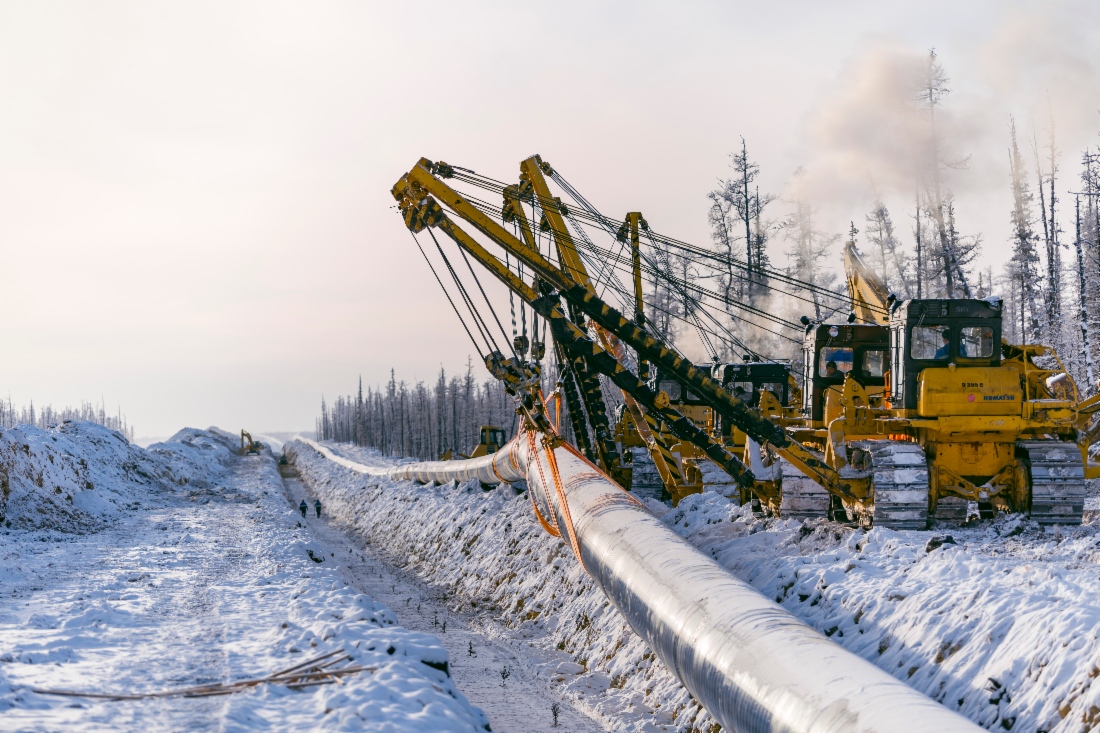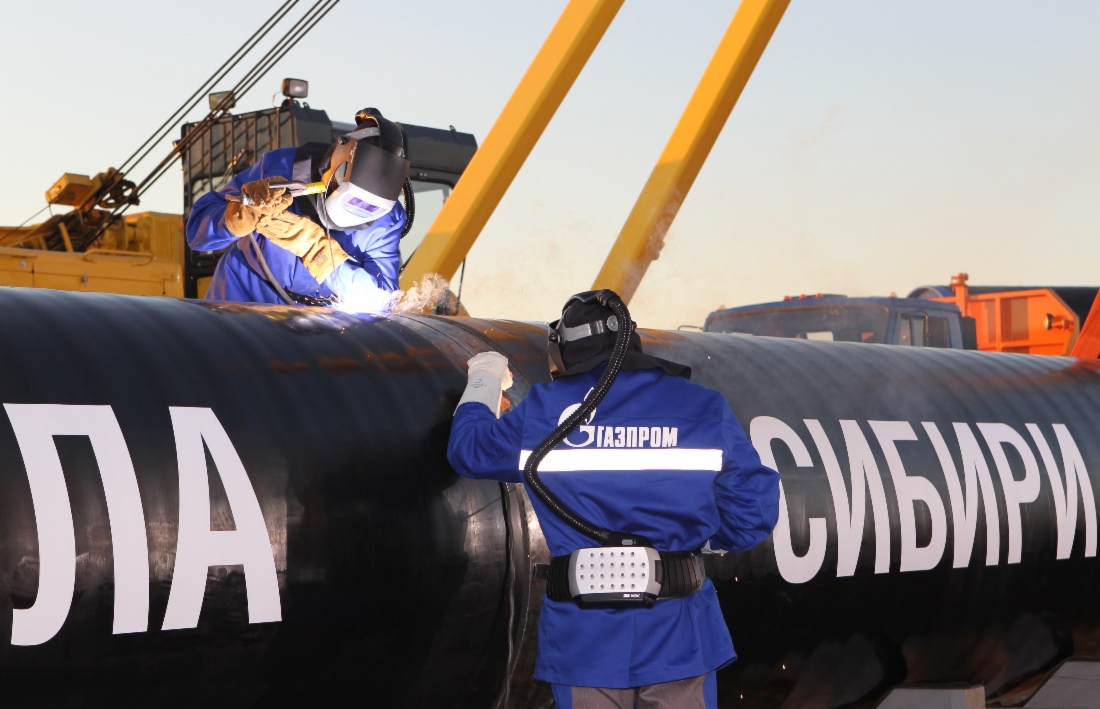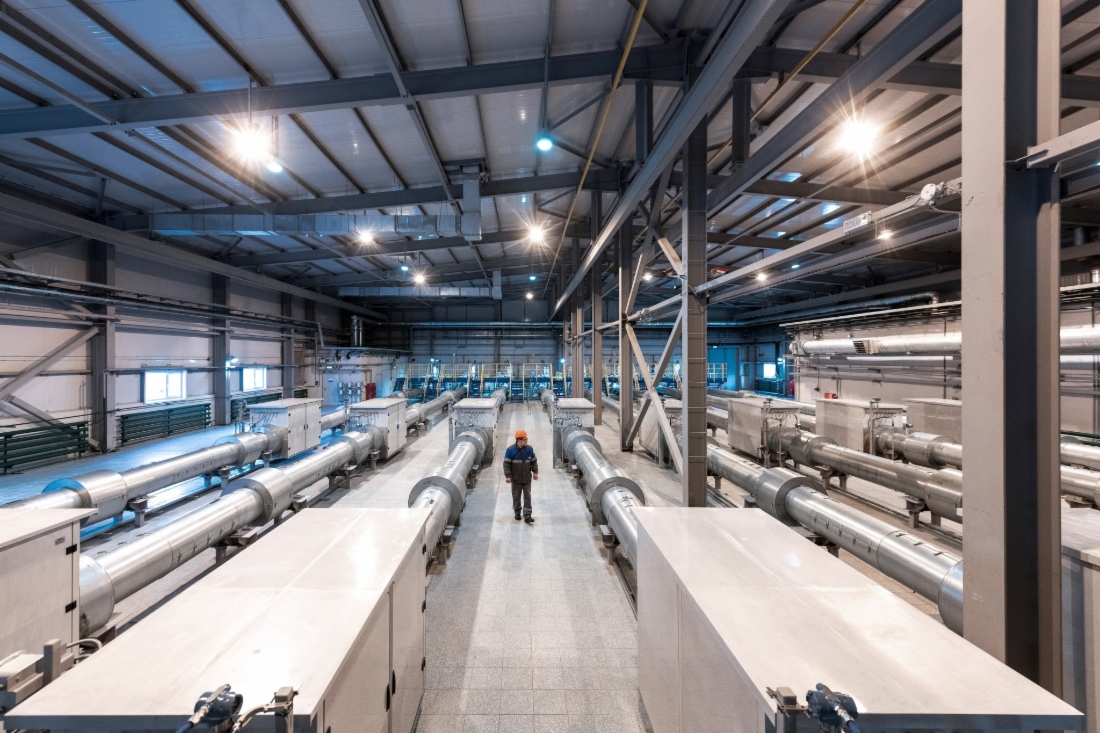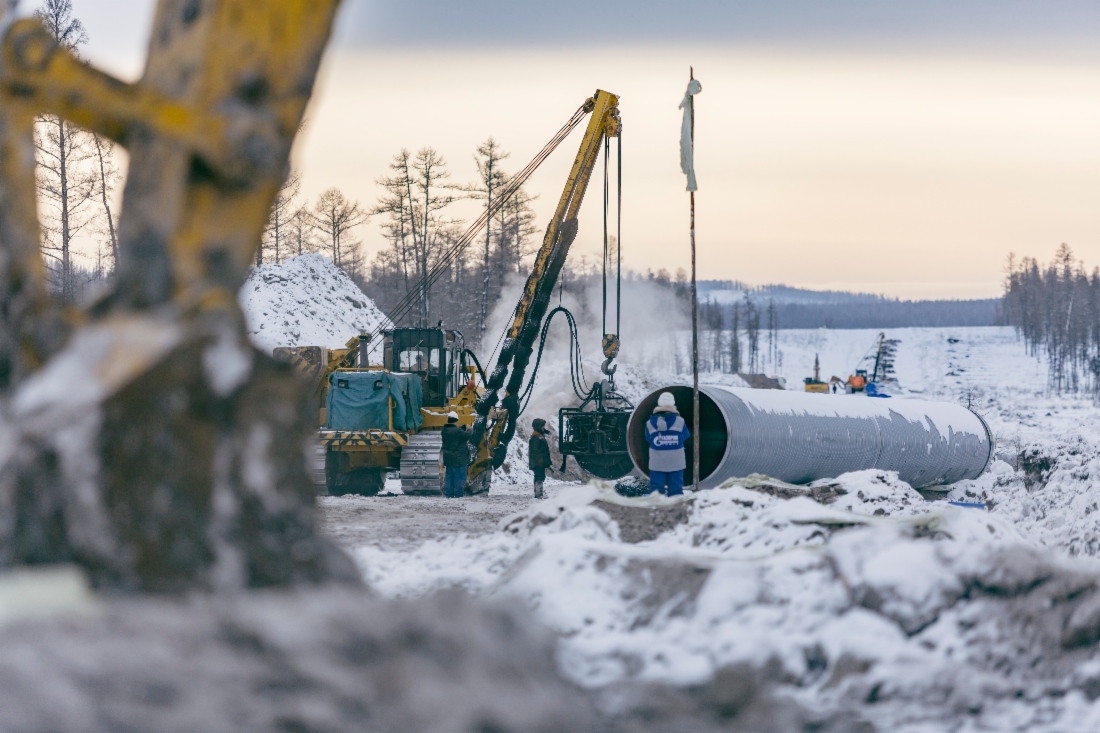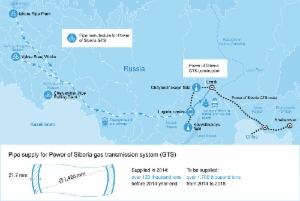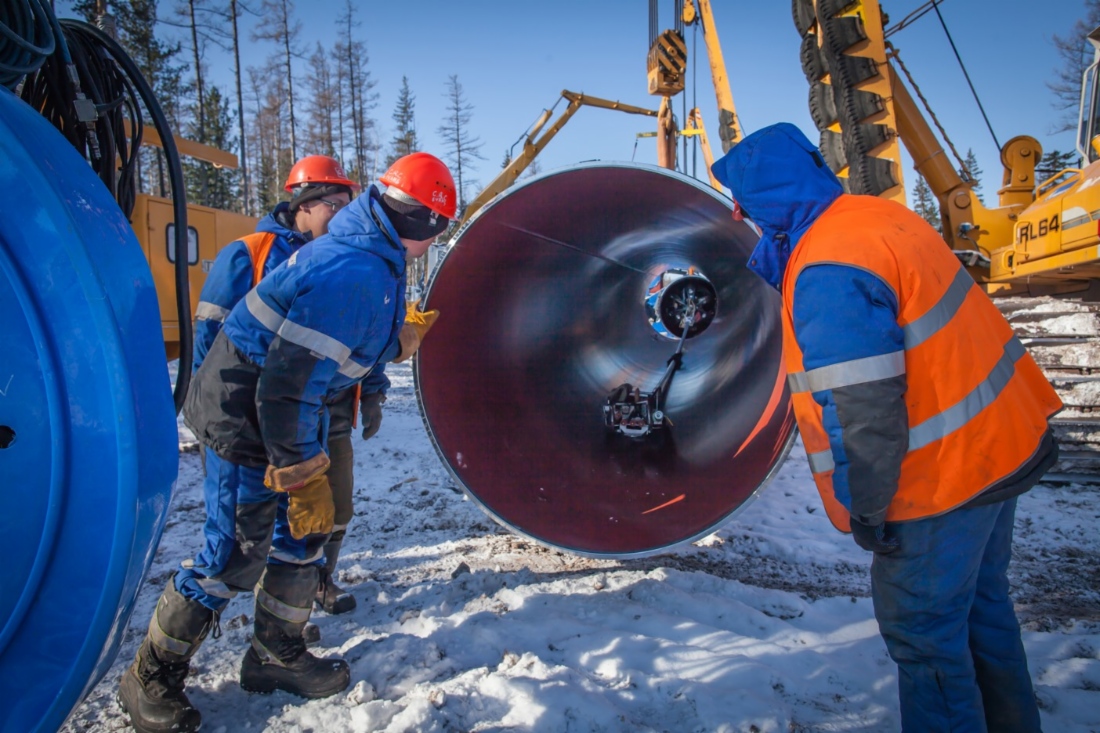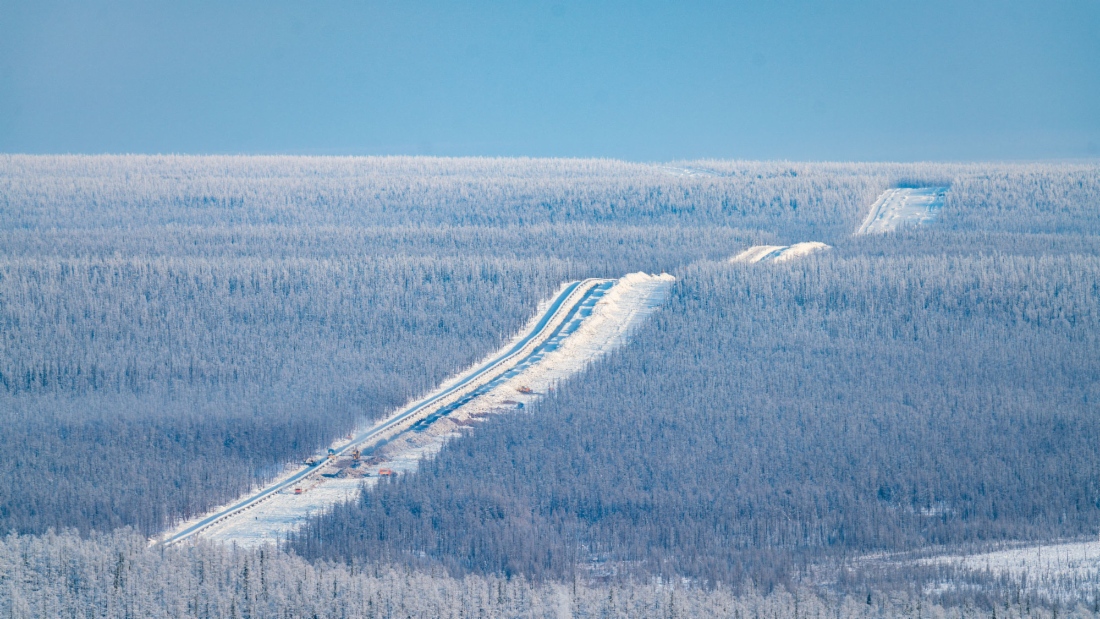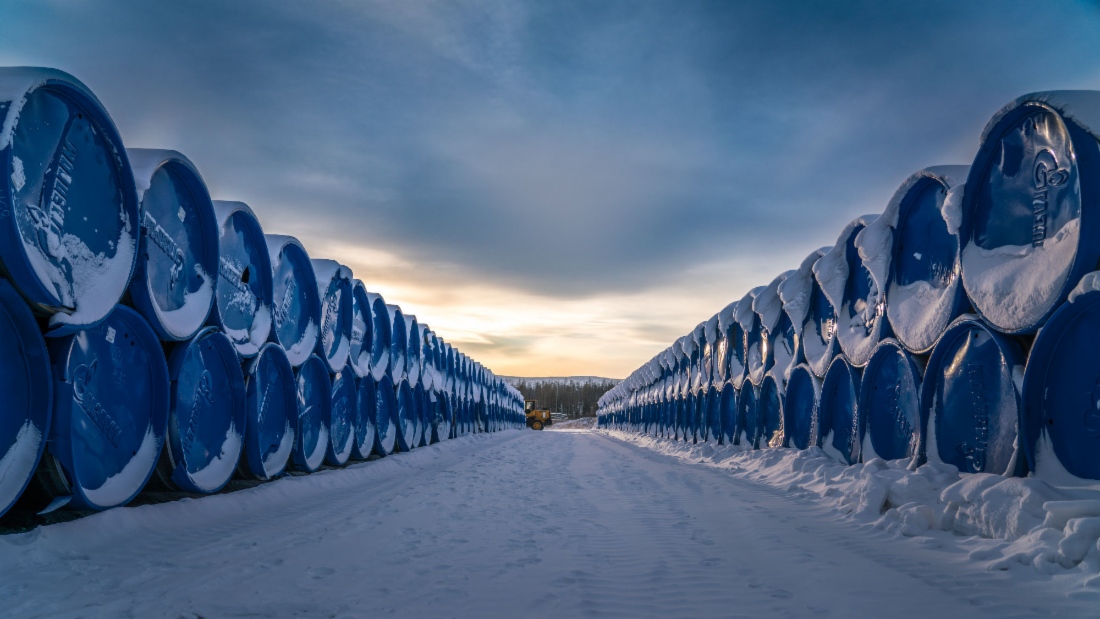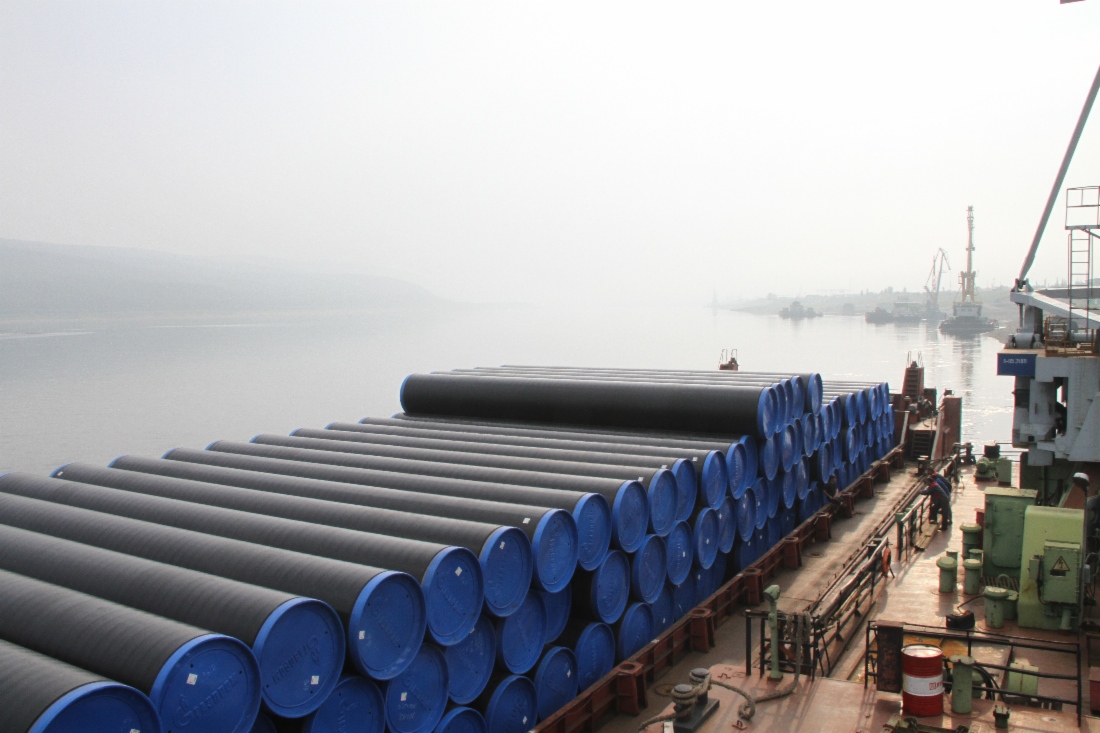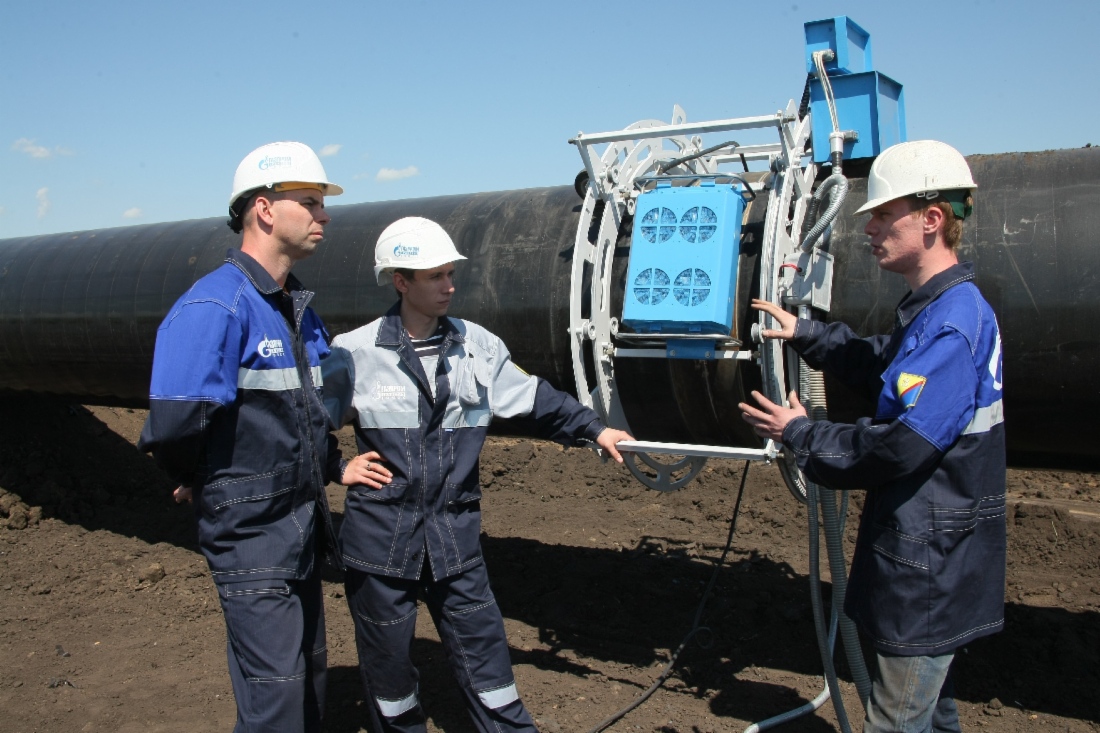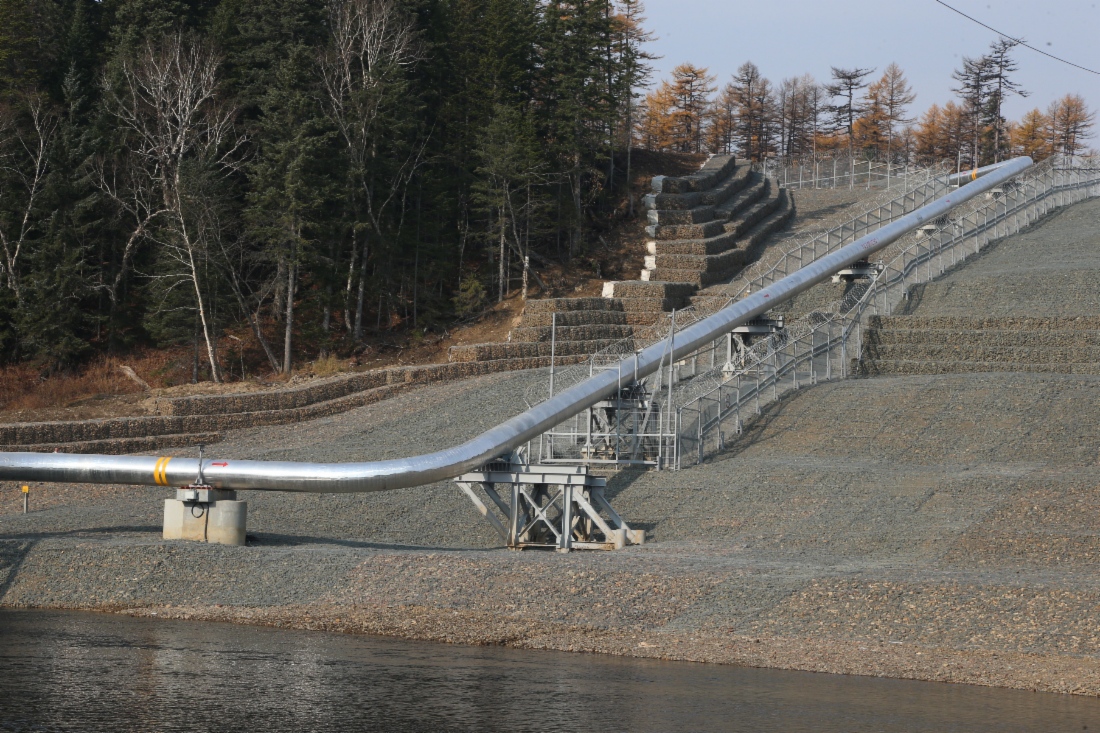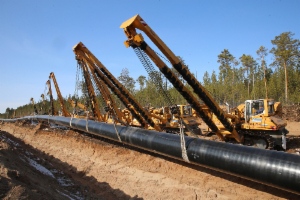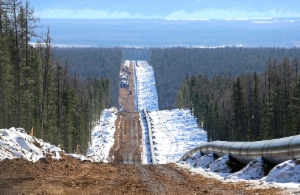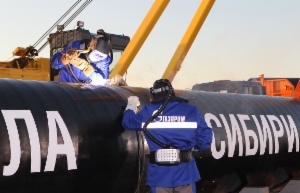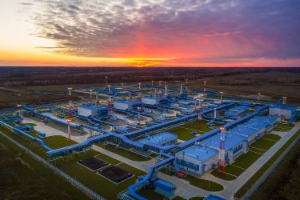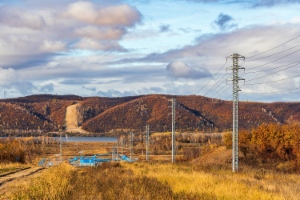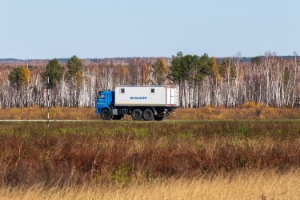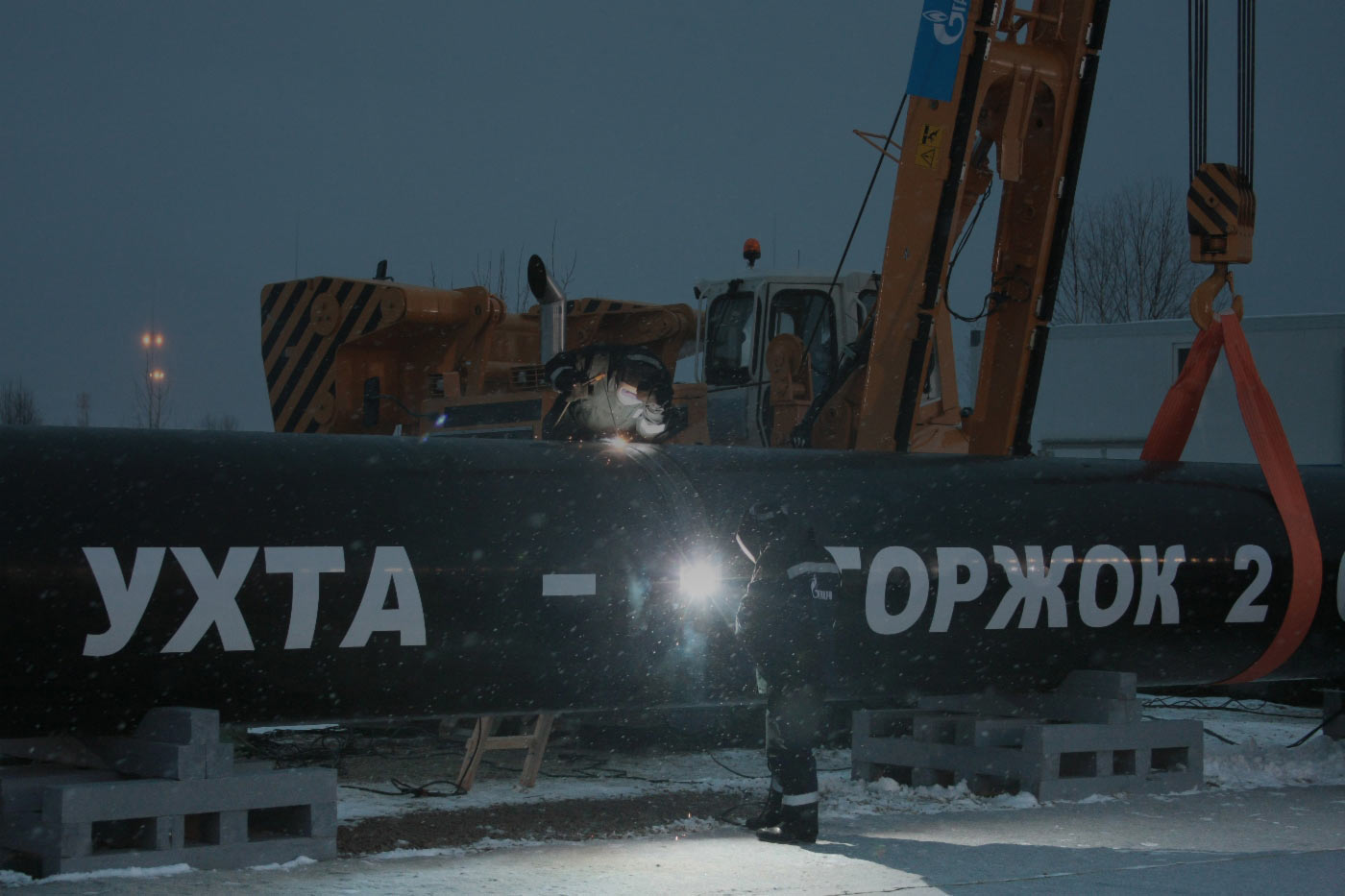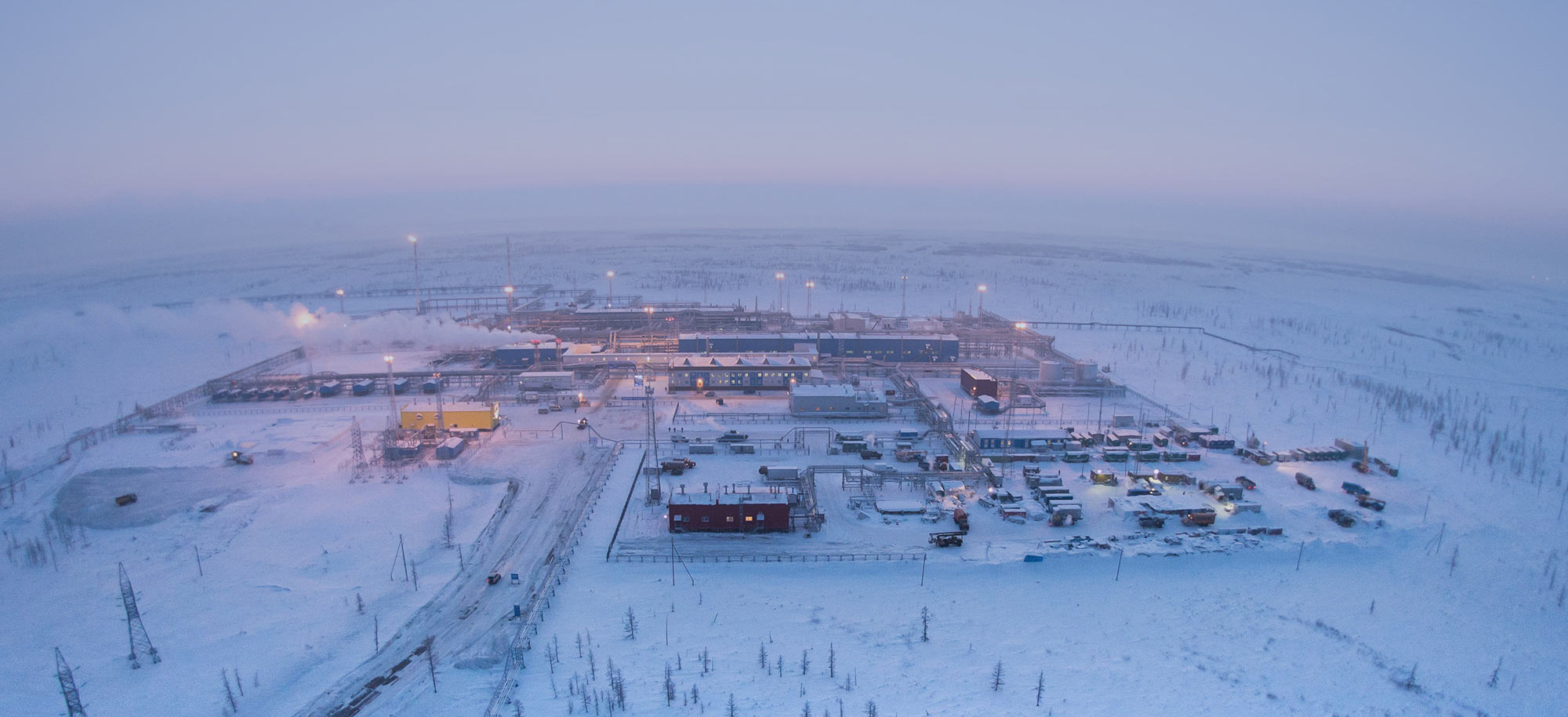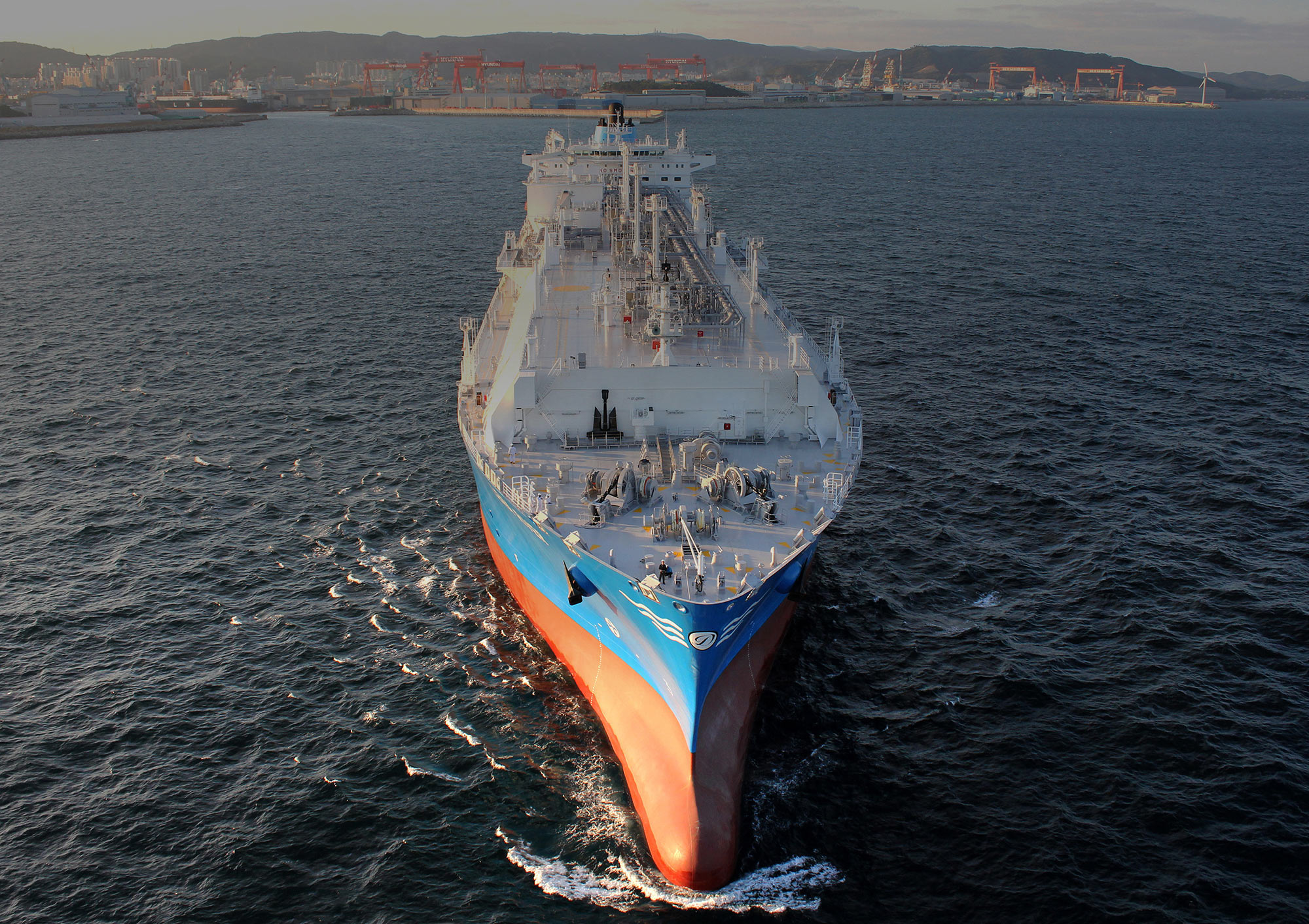The Power of Siberia gas trunkline (eastern route) supplies gas from the Kovyktinskoye field in the Irkutsk Region and the Chayandinskoye field in Yakutia to domestic consumers in Russia's Far East and to China.
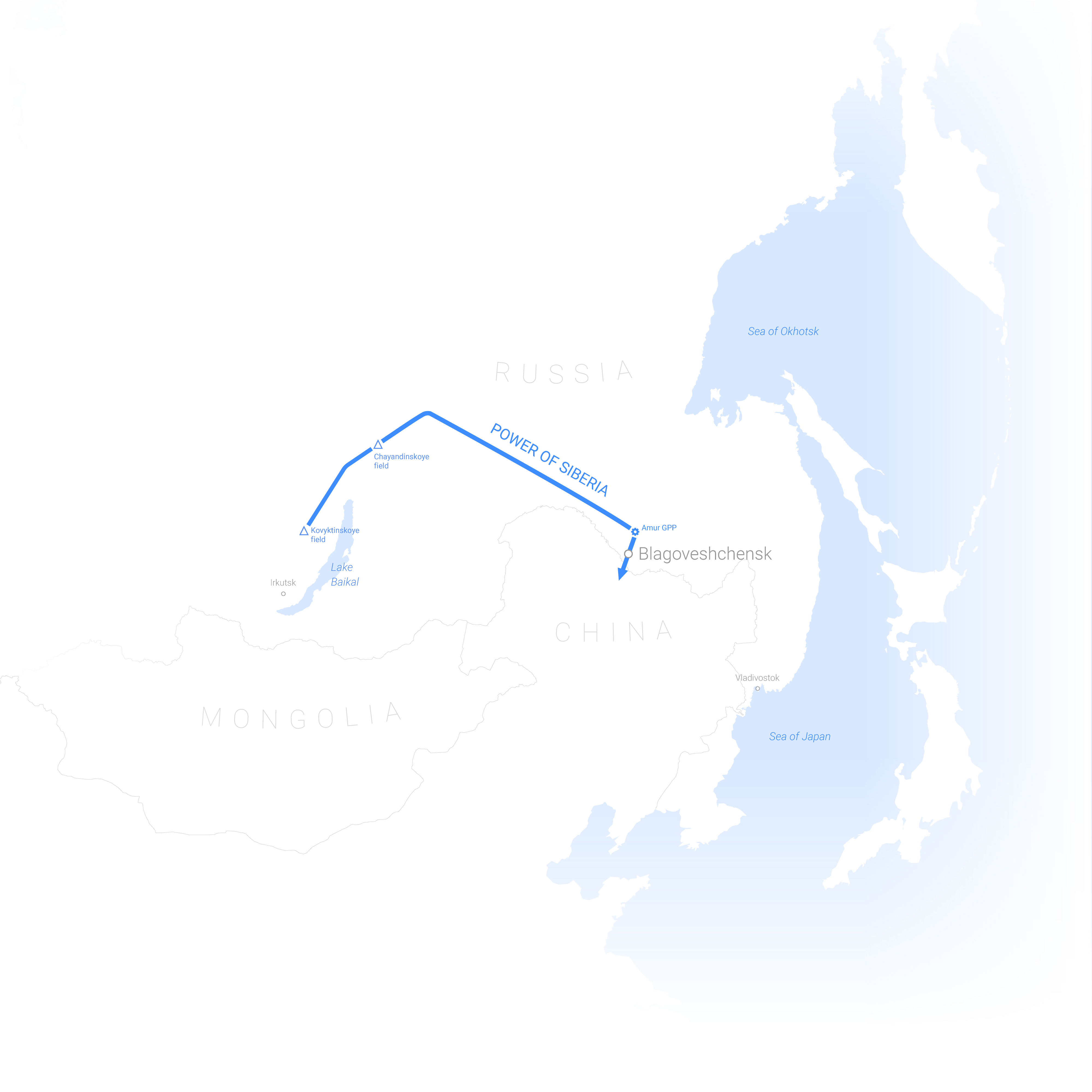
export capacity
export capacity
Figures and facts
Length: over 3,000 kilometers.
Diameter: 1,420 millimeters.
Working pressure: 9.8 MPa.
Export capacity: 38 billion cubic meters per year.
The gas pipeline traverses three Russian constituent entities, namely the Irkutsk and Amur Regions and the Republic of Sakha (Yakutia).
Project implementation
In May 2014, Gazprom and China National Petroleum Corporation (CNPC) signed the Sales and Purchase Agreement for gas to be supplied via the eastern route (Power of Siberia gas pipeline). The 30-year Agreement provides for Russian gas deliveries to China in the amount of 38 billion cubic meters per year.
In September 2014, Gazprom commenced the construction of Power of Siberia's first section running some 2,200 kilometers from the Chayandinskoye field (Yakutia) to Blagoveshchensk (Chinese border). The second phase of the project is the construction of a section stretching for 804 kilometers from the Kovyktinskoye field (Irkutsk Region) to the Chayandinskoye field. The third stage provides for expanding gas transmission capacities between the Chayandinskoye field and Blagoveshchensk.
In September 2016, Gazprom and CNPC signed the EPC contract to construct a crossing under the Amur River within the cross-border section of the Power of Siberia pipeline. Construction in the Chinese territory started in April 2017. In May 2017, a temporary two-way checkpoint was opened on the Russian-Chinese border to provide unfettered access to the border area for construction equipment and personnel.
On December 2, 2019, Power of Siberia was brought into operation and the first-ever pipeline supplies of Russian gas to China were launched.
On December 21, 2022, a section of Power of Siberia between the Kovyktinskoye and Chayandinskoye fields was launched. Thus, the entire length of the Power of Siberia gas pipeline – more than 3,000 kilometers – was brought into operation.
Technologies
All the pipes used in the construction of Power of Siberia are produced in Russia.
The pipeline route passes through swampy, mountainous, seismically active, permafrost and rocky areas with extreme environmental conditions. The absolute lowest air temperatures along the Power of Siberia route range from –41 degrees Celsius in the Amur Region to –62 degrees Celsius in the Republic of Sakha (Yakutia).
Gazprom uses advanced, highly reliable and energy efficient technologies and equipment in the construction of Power of Siberia. The Company employs, inter alia, domestically produced steel pipes with inner anti-friction coating, which allows Gazprom to make gas transmission less energy-consuming thanks to a reduction in pipe roughness and therefore in friction. External insulation coating is made of innovative domestic nanocomposite materials, which ensures high corrosion resistance of the gas pipeline. Pipes with enhanced deformation properties and special engineering solutions are used in the areas of active tectonic faults.
A unique 1.5-kilometer-long pipeline crossing under the Lena River was built during the construction of Power of Siberia's section between the Kovyktinskoye and Chayandinskoye fields. The crossing has the largest difference in altitude between its inlet and outlet points – namely, 157.94 meters. This record was entered in the Russian Book of Records. The construction of the crossing was performed by microtunneling at a depth of 13 meters under the riverbed. The gas pipeline's strings (the main one and the backup one), each of 1,420 mm in diameter, were pulled through the tunnels with the use of casing spacers which had been manufactured specially for Gazprom. The implemented solutions made it possible to preserve the local ecosystem, as well as to keep intact the archaeological artifacts found along the gas pipeline route.
Reliability and cost-effectiveness were major factors in equipment selection. For instance, energy self-sufficient electric drives for pipeline valves use accumulators and can operate autonomously for 20 years, which helps reduce construction costs and energy consumption.
Environmental protection
In delivering its projects, Gazprom pursues environmentally sustainable business practices. In order to mitigate environmental impacts, the Power of Siberia gas pipeline was designed so as to run primarily through sparse woods and fire sites (areas with burned trees). In addition, Gazprom uses rapidly deployable and self-propelled pipeline bridges in construction. One of the advantages of those bridges is that they do not require intermediate supports to cross rivers, brooks, and ravines, which is important for preserving the environment.
Social and economic significance
Power of Siberia contributes to socio-economic development in Russia's Far East. The gas pipeline facilitates gas supplies to and gas infrastructure expansion in the Russian regions, as well as the advancement of state-of-the-art gas processing and gas chemical facilities.
In parallel with building new production capacities in the eastern regions, Gazprom participates in the creation of an extensive social infrastructure and helps provide support to medical facilities and educational entities in these territories. As a result, millions of people have a better and more comfortable life and can look into the future with confidence.
For instance, in the Irkutsk Region, Gazprom built a modern water sports complex in Irkutsk and a sports complex with an ice arena and a universal game room in Tulun. A school-and-kindergarten facility for 110 children was built in the settlement of Bolshoye Goloustnoye through the funding from Gazprom. The Company provides financing for the construction of new schools in the town of Ust-Kut, as well as in the settlement of Zhigalovo. It is due to Gazprom's efforts that the Children's Clinical Hospital of the Irkutsk Region was provided with a high-tech surgical complex. In Bratsk, the Company facilitated the construction of the Cathedral of the Nativity with a spiritual education center.
In the Amur Region, a sports complex with a swimming pool was renovated with support from Gazprom in the town of Svobodny. An entire residential microdistrict complete with all required social infrastructure is also being built in Svobodny for the Amur Region residents employed at the Amur GPP. The microdistrict will feature a new outpatient clinic, a school, a kindergarten, a cultural center, and a sports complex to cater for the needs of everyone living in Svobodny.
New sports complexes were opened in the city of Blagoveshchensk, the settlement of Magdagachi and the village of Tambovka under the Gazprom for Children project. Support was provided to a number of educational institutions in the Amur Region to facilitate repair works in their educational facilities and fit them with modern equipment and gear. With participation of Gazprom, the Skovorodino District Hospital and the Svobodny City Hospital were fitted with cutting-edge medical equipment. The Company assisted in the construction of a church complex in Svobodny.
In Yakutia, new sports complexes in Yakutsk, Aldan, Neryungri, as well as in the settlement of Chulman were built under the Gazprom for Children project. It is with participation of Gazprom that modern medical equipment was provided to the Aldan, Olyokminsk, Neryungri, and Lensk District Hospitals. With support from the Company, the Russia – My History historical park was opened in Yakutsk.
Gazprom built and renovated dozens of multi-purpose sports grounds and school stadiums in the Irkutsk and Amur Regions and in Yakutia.





